The Capitol Ballet: 1970s Venues

1970
22nd April
- The Capitol Ballet Company performed with the Lloyd McNeil Jazz Quartet at the Henderson A. Johnson Gymnasium, Fisk University. This performance was part of the Southeastern Regional Ballet Festival. A reviewer praised the “uncommonly talented and well trained group of youngsters” and went on to observe that their “well developed bodies were not only disciplined to perform with firmness and grace, but the dancers were able to project a considerable range of expression through their attitudes and facial changes.” [see more info in the “Programs” section]
11th September
- Guest artists from The Capitol Ballet Company and the Tri-State Ballet Company in Philadelphia perform at the Mitchell Hall, University of Delaware as part of the Newark Art Festival.
1972
14th and 15th April
- The Capitol Ballet Company performed as part of the celebrations for Spelman College’s 91st anniversary.
1973
21st November
- The Capitol Ballet Company Performed at Cramton Auditorium, Howard University. [see more info in the “Programs” section]
1976/77
20th November
- Capitol Ballet has its live series at the Lisner Auditorium (GWU) under the direction of Doris W. Jones & Claire Haywood in association with Sylvester Campbell. [see more info in the “Programs” section]
More about Fisk University, Henderson A. Johnson Gymnasium
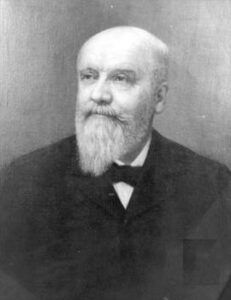
In 1865, barely six months after the end of the Civil War and just two years after the Emancipation Proclamation, three men—John Ogden, the Reverend Erastus Milo Cravath, and the Reverend Edward P. Smith—established the Fisk School in Nashville.
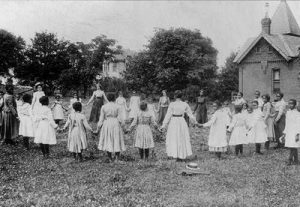
The school was named in honor of General Clinton B. Fisk of the Tennessee Freedmen’s Bureau, who provided the new institution with facilities in former Union Army barracks near the present site of Nashville’s Union Station. In these facilities Fisk convened its first classes on January 9, 1866. The first students ranged in age from seven to seventy, but shared common experiences of slavery and poverty and an extraordinary thirst for learning.
The work of Fisk’s founders was sponsored by the American Missionary Association—later part of the United Church of Christ, with which Fisk retains an affiliation today.
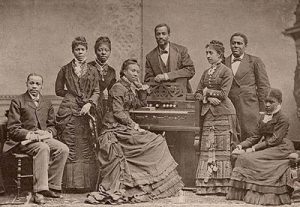
Ogden, Cravath, and Smith, along with others in their movement, shared a dream of an educational institution that would be open to all, regardless of race, and that would measure itself by “the highest standards, not of Negro education, but of American education at its best.” Their dream was incorporated as Fisk University on August 22, 1867.
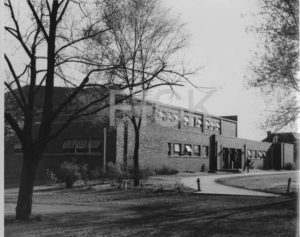
Henderson A. Johnson Gymnasium was established in 1950 and named in honor of outstanding Fisk athlete, coach, dean of men and director of physical education. The building is still standing.
Source:
More about the University of Delaware, Mitchell Hall
The University of Delaware (colloquially UD, UDel or Delaware) is a public land-grant research university located in Newark, Delaware. UD is the largest university in Delaware. It offers three associate’s programs, 148 bachelor’s programs, 121 master’s programs (with 13 joint degrees), and 55 doctoral programs across its eight colleges. The main campus is in Newark, with satellite campuses in Dover, the Wilmington area, Lewes, and Georgetown. It is considered a large institution with approximately 18,200 undergraduate and 4,200 graduate students. It is a privately governed university which receives public funding for being a land-grant, sea-grant, and space-grant state-supported research institution.
UD is classified among “R1: Doctoral Universities – Very high research activity”. According to the National Science Foundation, UD spent $186 million on research and development in 2018, ranking it 119th in the nation. It is recognized with the Community Engagement Classification by the Carnegie Foundation for the Advancement of Teaching.
University of Delaware is one of only four schools in North America with a major in art conservation. In 1923, it was the first American university to offer a study-abroad program.
UD traces its origins to a “Free School,” founded in New London, Pennsylvania in 1743. The school moved to Newark, Delaware by 1765, becoming the Newark Academy. The academy trustees secured a charter for Newark College in 1833 and the academy became part of the college, which changed its name to Delaware College in 1843. While not considered one of the colonial colleges because it was not a chartered institution of higher education during the colonial era, its original class of ten students included George Read, Thomas McKean, and James Smith, all three of whom went on to sign the Declaration of Independence. Read also later signed the United States Constitution.
Source:
University of Delaware, Wikipedia
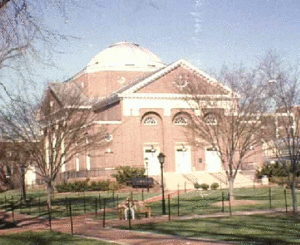
Architect/Designer: Charles Klauder
Current Function: Department of Theater
The University of Delaware received Mitchell Hall as a gift from H. Rodney Sharp in 1930. A symmetrical, brick building, it has a two-story central block with a dome and, toward the rear, one-story wings extending north and south. The east and west elevations of the main block each have a pedimented gable above three recessed arches. Within these arches, three sets of double doors open onto the mall while one set opens toward the street. Recessed arches also appear on the one-story wings. H. Rodney Sharp is one of the most important figures in the development of the physical campus of the University of Delaware. A 1900 graduate, he became an active alumnus and fund raiser. On the Board of Trustees, he served first as chair of the Committee on Planning and Development and later as chair of the Buildings and Grounds Committee. He introduced major benefactor Pierre S. du Pont to the university (see Wolf Hall profile), negotiated purchase of the property south of Main Street, chose Marian Coffin to landscape the campus and reviewed designs for new buildings as late as 1963. His financial contributions to the university eventually exceeded even those of Pierre S. du Pont. Sharp insisted that Mitchell Hall be named for Samuel Chiles Mitchell, president of Delaware College from 1914 to 1920. Consultants from the Yale drama department helped plan the building, which served as a concert hall, theater and auditorium. Pierre S. du Pont donated a pipe organ for use in the new space. Mitchell Hall became a regional theater in Delaware, hosting performances by university, community and traveling companies. Although an auditorium was a low priority for the university at the time, president Walter Hullihen praised Mitchell Hall as the “‘finest building on campus.'”
Source:
More about Spelman College
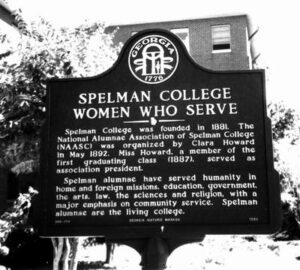 Founded in 1881 as the Atlanta Baptist Female Seminary, we became Spelman College in 1924. Now a global leader in the education of women of African descent, Spelman is accredited by the Southern Association of Colleges and Schools Commission on Colleges (SACSCOC), and we are proud members of the Atlanta University Center Consortium.
Founded in 1881 as the Atlanta Baptist Female Seminary, we became Spelman College in 1924. Now a global leader in the education of women of African descent, Spelman is accredited by the Southern Association of Colleges and Schools Commission on Colleges (SACSCOC), and we are proud members of the Atlanta University Center Consortium.
Today our student body comprises more than 2,100 students from 43 states and 10 foreign countries. Spelman empowers women to engage the many cultures of the world and inspires a commitment to positive social change through service. We are dedicated to academic excellence in the liberal arts and sciences and the intellectual, creative, ethical and leadership development of our students.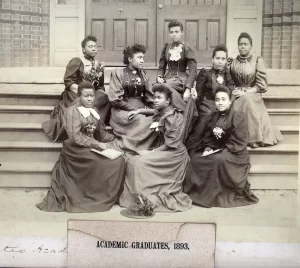
Spelman is proud of its 76 percent graduation rate (average over six years), one of the best in the nation, but our support doesn’t stop once you step on stage to take your diploma. Our global alumnae network is strong, providing connections and helping hands to graduates as they begin on their path of global engagement.
More about Howard University, Cramton Hall Auditorium
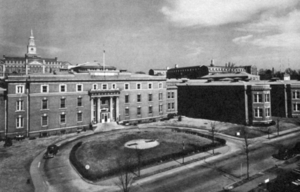 Founded in 1867, Howard University is a private, research university comprised of 13 schools and colleges.
Founded in 1867, Howard University is a private, research university comprised of 13 schools and colleges.Students pursue studies in more than 140 areas leading to undergraduate, graduate and professional degrees. To date, Howard has awarded more than 120,000 degrees in the arts, the sciences, and the humanities, and more on-campus African-American Ph.D. recipients than any other university in the United States. The historic main campus sits on a hilltop in Northwest Washington blocks from the storied U Street and Howard Theatre. We are two miles from the U.S. Capitol where many students intern, and scores of alumni shape national and foreign policy.
Howard is a leader in STEM fields. The National Science Foundation has ranked Howard as the top producer of African-American undergraduates who later earn science and engineering doctoral degrees. The University also boasts nationally ranked programs in social work, business and communications. To date, we have produced one Schwarzman Scholar, three Marshall Scholars, four Rhodes Scholars, 12 Truman Scholars, 25 Pickering Fellows and more than 165 Fulbright recipients.
The College of Medicine is internationally regarded for its illustrious legacy of training students to become competent and compassionate physicians who provide health care in medically underserved communities at home and abroad. The College is a national leader in studying health disparities among people of color and is one of America’s top institutions for training women surgeons. The Howard University Health Sciences division includes the Howard University Hospital and the Colleges of Dentistry, Pharmacy, and as well as Nursing and Allied Health Sciences.
For more than 150 years, the Howard University School of Law has served as an advocate for social justice and as an architect of social change. It has produced more than 4,000 social engineers including the first African-American Supreme Court Justice, noted legislators, civil rights attorneys, mayors and public officials across the United States. It is the No. 1 law school for African Americans ranked by preLaw magazine.
The University’s motto Veritas et Utilitas, Truth and Service, represents a key part of our identity. The more than 10,000 undergraduate and graduate students dedicate hundreds of hours each year to service in nearby LeDroit Park, around the nation and throughout the world. Over the U.S. Peace Corps’ 50-year history, more than 200 Howard graduates have served as volunteers around the globe, the highest number among historically-Black colleges.
The University remains committed to further enhancing its strategic positioning as one of the top research universities in the nation. As we celebrate 154 years, we are uniquely positioned to have the next 150 years as glorious as the past.
Source:
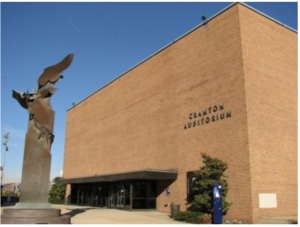
Cramton Auditorium opened in 1961, and the National Symphony Orchestra completed the “first guest performance” in the facility. It is named for Louis C. Cramton, who served as a U.S. Congressman from Michigan from 1913-1931. He was a strong supporter of Howard University during his tenure.
Source:
Cramton Hall, Howard University
More about George Washington University, Lisner Auditorium
The George Washington University (GW or GWU) is a private federally chartered research university in Washington, D.C. Chartered in 1821 by the United States Congress, GWU is the largest institution of higher education in the District of Columbia.
George Washington, the first President of the United States, advocated for the establishment of a national university in the U.S. capital in his first State of the Union address in 1790 and continued to promote this idea throughout his career and until his death. In his will, Washington left shares in the Potomac Company to endow the university. However, due to the company’s financial difficulties, funds were raised independently by Baptist ministers. On February 9, 1821, the university was established by an Act of Congress first as Columbian College and then as Columbian University, making it one of only five universities in the United States with a Congressional charter.
The university’s undergraduate and graduate schools includes the Columbian College of Arts and Sciences, the Elliott School of International Affairs, the GWU School of Business, the School of Media and Public Affairs, the Trachtenberg School of Public Policy and Public Administration, the GWU Law School and the Corcoran School of the Arts and Design. GWU’s main Foggy Bottom campus is located in the heart of Washington, D.C., with the International Monetary Fund and the World Bank located on campus and the White House and the U.S. Department of State within blocks of campus. GWU hosts numerous research centers and institutes, including the National Security Archive and the Institute for International Economic Policy. GWU also has two satellite campuses: the Mount Vernon campus, located in D.C.’s Foxhall neighborhood, and the Virginia Science and Technology Campus in Loudoun County, Virginia.
GWU is classified among “R1: Doctoral Universities – Very High Research Activity”. The university offers degree programs in seventy-one disciplines, enrolling around 11,000 undergraduate and 15,500 graduate students. GWU is home to extensive student life programs, a strong Greek culture, and over 450 other student organizations. The school’s athletic teams, the George Washington Colonials, play in the NCAA Division I Atlantic 10 Conference. GWU also annually hosts numerous political events, including the World Bank and International Monetary Fund’s Annual Meetings.
The university’s alumni, faculty, and affiliates include 16 foreign heads of state or government, 28 United States senators, 27 United States governors, 18 U.S. Cabinet members, five Nobel laureates, two Olympic medalists, two Academy Award winners, and a Golden Globe winner. GWU has over 1,100 active alumni in the U.S. Foreign Service and is one of the largest feeder schools for the diplomatic corps.
Source:
George Washington University, Wikipedia
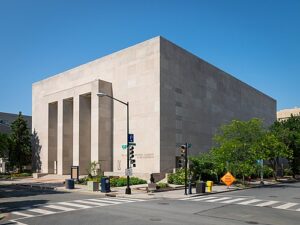
Lisner Auditorium is a performance venue sited on the Foggy Bottom campus of The George Washington University, at 730 21st Street Northwest, Washington, D.C. Named for Abram Lisner (1852-1938), a university trustee and benefactor whose will provided one million dollars towards its construction, it was designed in 1940 and completed in 1946. Constructed in the stripped classicist style of the late Art Deco and host to major classical, folk, rock, blues, opera, and theatrical performances over the decades, it was placed on the National Register of Historic Places in 1990 for its dual significance as an architectural work and as a performance venue. It also played a key role in desegregation at GW and in D.C.; its 1946 grand opening became a city-wide target for the desegregation of D.C. theaters and a catalyst for GW students calling on the university to admit African American students. The auditorium seats 1,490 and is the home of the Washington Concert Opera.
Source:
The Duke Ellington School of the Arts (Western High School) Auditorium
 The building that now houses the Duke Ellington School of the Arts originally contained Western High School, which served “white students in the western section of the District and suburbs.” Designed by Harry B. Davis, this Classical Revival-style building was built specifically to become a school between 1897 and 1898.
The building that now houses the Duke Ellington School of the Arts originally contained Western High School, which served “white students in the western section of the District and suburbs.” Designed by Harry B. Davis, this Classical Revival-style building was built specifically to become a school between 1897 and 1898.The Duke Ellington School of the Arts, named for the famous Washington native, was established in 1974 and is still one of the best public high schools in Washington DC. Its faculty has included Sandra Fortune Green, James Thurston, and Adrian Vincent James. The list of successful alumni of the high school includes Terrace Jones, Don Bellamy, and Jenelle Figgins.
Sources:
Duke Ellington School of the Arts, Wikipedia
Western High School (Duke Ellington School of the Arts), DC Historic Sites

